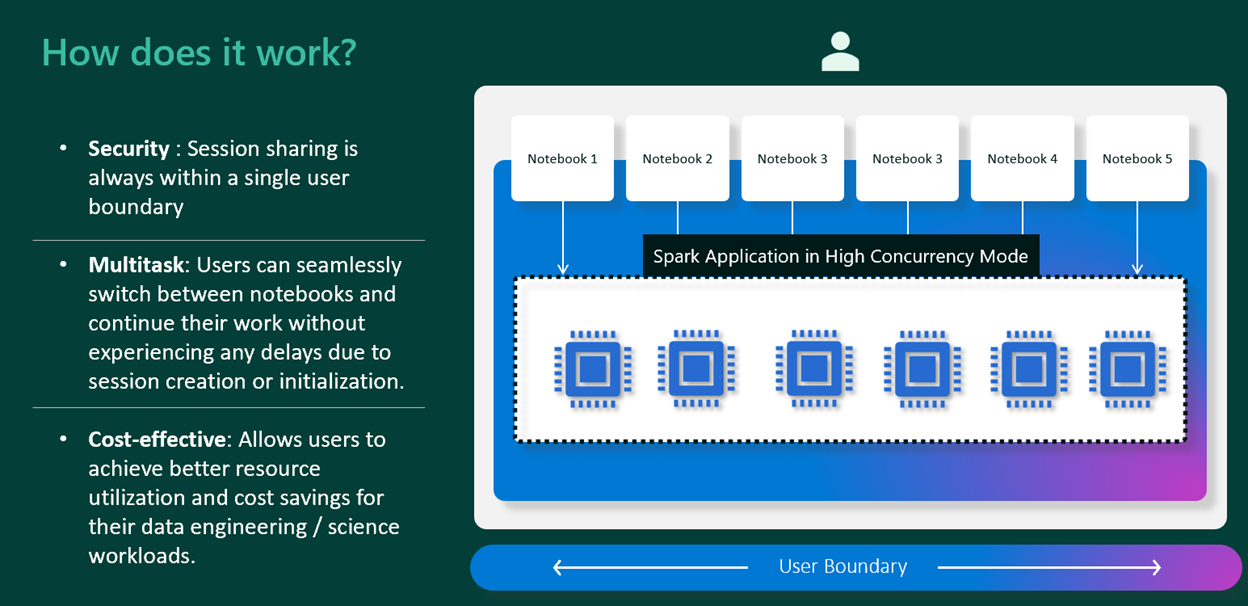Note
Access to this page requires authorization. You can try signing in or changing directories.
Access to this page requires authorization. You can try changing directories.
High concurrency mode allows users to share the same Spark sessions in Spark for Fabric for data engineering and data science workloads. An item like a notebook uses a standard Spark session for its execution. In high concurrency mode, the Spark session can support independent execution of multiple items within individual read-eval-print loop (REPL) cores that exist within the Spark application. These REPL cores provide isolation for each item, and prevent local notebook variables from being overwritten by variables with the same name from other notebooks sharing the same session.
As the session is already running, this provides users with an instant run experience when reusing the session across multiple notebooks.
Note
In the case of custom pools with high concurrency mode, users get 36X faster session start experience compared to a standard Spark session.
Important
Session sharing conditions include:
- Sessions should be within a single user boundary.
- Sessions should have the same default lakehouse configuration.
- Sessions should have the same Spark compute properties.
As part of Spark session initialization, a REPL core is created. Every time a new item starts sharing the same session and the executors are allocated in FAIR based manner to these notebooks running in these REPL cores inside the Spark application preventing starvation scenarios.
Billing of High Concurrency Sessions
When using high concurrency mode, only the initiating session that starts the shared Spark application is billed. All subsequent sessions that share the same Spark session do not incur additional billing. This approach enables cost optimization for teams and users running multiple concurrent workloads in a shared context.
📌 Example:
- A user starts Notebook 1, which initiates a Spark session in high concurrency mode.
- The same session is then shared by Notebook 2, Notebook 3, Notebook 4, and Notebook 5.
- In this case, only Notebook 1 will be billed for the Spark compute usage.
- The shared notebooks (2 to 5) will not be billed individually.
This billing behavior is also reflected in Capacity Metrics — usage will only be reported against the initiating notebook (Notebook 1 in this case).
Note
The same billing behavior applies when high concurrency mode is used within pipeline activities — only the notebook or activity that initiates the Spark session is charged.
Related content
- To get started with high concurrency mode in notebooks, see Configure high concurrency mode for Fabric notebooks.
